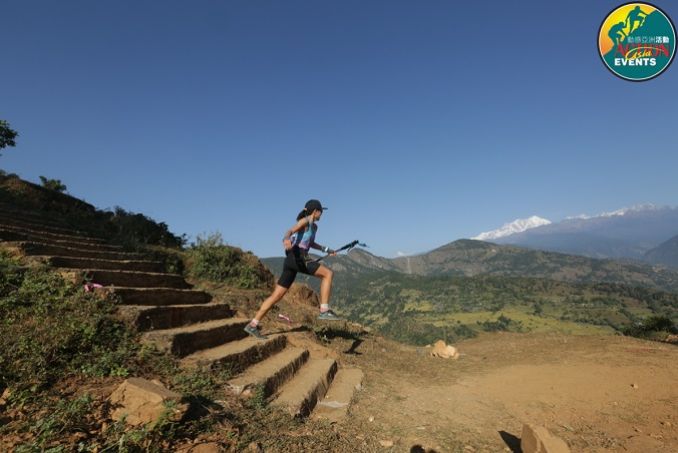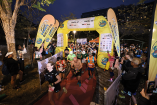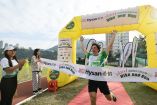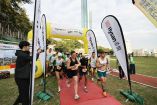Discovering a hidden paradise in Nepal over three special days
By Jeanette Wang
When was the last time you booked a travel package without knowing exactly where you’re going?
I had my first experience of such a trip a couple of weeks ago, at the Nepal Action Asia 3-day 100km Ultra from Nov 2-4. The landlocked country has for a long time been on my travel bucket list, and since I was seeking a holiday and to build up some mileage ahead of the 2019 HK100 in January, I thought, why not?
This surprise element is a signature of race director Michael Maddess’ Action Asia 3-day 100km/60km events, which take place in Nepal, Kazakhstan, Mongolia and Lijiang at different times of the year, and at different locations each year. The exact location of the race is a secret — until you get there.
Or should I say, in the case of Nepal, finally get there. After nearly eight hours and 190km on the long, busy and winding road from Kathmandu, often coming within inches of another vehicle, our coach finally came to a stop at the Gateway Himalaya Resort, much to the relief of my head, heart and bladder.
Thanks to Google Maps I managed to place ourselves: Besisahar, a sleepy little town that sits in the lap of the Himalayas and is the gateway to the Annapurna mountain range. It’s so off-the-beaten-track that you wouldn’t find much else about Besisahar on the Internet, not even on the Nepal Tourism website.
This special place would be our base for the next three days.
The coach ride, on hindsight, was the hardest part of the trip. (Second for me was the excruciating 90-minute wait for our luggage at Kathmandu Airport. Third was resisting the delicious but spicy Nepalese curries till after the race.)
The race itself — split into roughly 40km/40km/20km or 20km/20km/20km over three days — was challenging, consisting of some long steep climbs and technical descents. But it isn’t insurmountable, as long as you are fit enough to hike for 4-5 hours at a leisurely pace.
Besides, we had oodles of time each day to complete the race. By altering your speed and expectations, you could make it as difficult or easy as you like. And I believe for the 62 participants, including myself, we were more fixated with taking photos than pushing ourselves to our physical limits or trying to outrun our closest rival.
As Kurt Lynn, who cruised to the overall title in the 100km category and is a regular top finisher in Hong Kong trail races, said: “The views were just amazing. Every time we went up the climbs and saw the views, we stopped for some photos. I usually don’t do this in a race, but I just had to stop for the photos.”
Twenty-two participants signed up for the 100km category and the rest for the 60km. Many were residents of Hong Kong but also a number flew in from elsewhere like Geneva, New York City and Singapore. It was a fun, eclectic multi-national group with ages ranging from 20s to 60s.
Apart from a few hardcore trail and road runners, most were weekend warriors or leisure hikers. But whatever our athletic ability, for this event, many of us were simply Nepal tourists at heart.
And what a truly amazing perspective we received on the land of temples, pagodas, stupas, sacred places and snow-capped mountains. Besisahar itself rests in a valley at about 800m above sea level with views of the Himalayas and lush green mountainsides dotted with traditional Nepalese homes and vast farmland where they grow their own food.
Within the town itself there were other tourists, not many and mostly trekkers, which is not surprising given Besisahar is the starting point of the Annapurna circuit. But once on the trails, the only foreigners were us Action Asia participants. This certainly wasn’t your typical Nepal experience.
Maddess, the inimitable Action Asia race director and course designer, would brief us each night on the next day’s route. True to Maddess’ style, you never really get clarity about the course, but you can be assured that it will be an amazing, well-marked one.
Red arrows, pink and orange flags, and the friendliest local course marshals guided us on the way each day against the beautiful backdrop of Manasalu, Ganesh Himal and Annapurna.
Aid stations were basic but adequate, offering water, bananas, juicy local oranges, and, most refreshing of all, warm smiles and encouragement from the local Nepalese manning the stations.
“Namaste!” I said to each and every local I ran past, with palms pressed in front of my heart, a slight bow of the head and a smile. “Namaste,” they would reply, returning the traditional Nepalese greeting. Families stood outside their door cheering for us as we passed, and sometimes a cheeky kid or two would run alongside in their flip flops.
“One boy ran up to me and offered me an egg from his school lunch box,” says Matthias Weiskopf, who came in third among men in the 60km category. “It really put things in perspective, that even though they didn’t have much, they were so happy and willing to share. The warm locals and the wonderful scenery really made the race special for me.”
Long stone-stepped climbs and descents. Stunning single track through dense forest. Wide dirt tracks. Icy cold river crossings. Breathtaking long suspension bridges. Soft grassy fields. Multi-coloured prayer flags. Cows, goats, chickens. The orchestra of pristine Nepalese countryside and nature serenaded us all.
“The Himalayas are totally mythical,” says Jamie McGregor, a towering personal trainer and rugby player who finished fourth overall in the 100km category. “The fresh air, the views and the folklore harvested by wonderful people who live there cast quite a spell.”
I had caught up with McGregor about halfway into the first 40km stage, and we ran together for a few kilometres, chit-chatting and stopping at one tiny village along the way to photograph a band of men making joyful traditional music. Nope, we were in no rush to get to the finish line.
For Delphine Riche-Franz, a professional photographer who swapped the 60km category lead many times with eventual winner Natalie Rie, the struggle to be both a competitor and a tourist was very real.
“It was really hard, a real dilemma!” said Riche-Franz, a mother of three. “While wanting the adrenaline kick of pushing myself and having this competitive instinct, the awareness of being in such a special and beautiful place, where I won’t be able to come back to so soon, made me slow down and enjoy the view as much as I could.
“It would have been too silly to only look at my feet to go as fast as possible, instead of sightseeing and enjoying the moment. So I basically took tons of iPhone shots for the first half and then pushed myself in the other half, forcing myself not to take pictures anymore. But of course I couldn’t help it!”
For Rie, who straight after the race went trekking in the Annapurna region, the most memorable part of the event was the people. “The fabulous local team, who went out of their way to help us… and the amazingly fun runners from all sorts of horizons, whose company and laughter made the trip thoroughly enjoyable and memorable,” she said.
The race started and finished each day from the grassy lawn of the hotel, where most participants spent the rest of the day relaxing and mingling over beers and scrumptious Nepalese food from the hotel cafe right next to the lawn. (The momos — similar to dumplings — were a hot favourite and sold out by the second afternoon.)
Poolside was another popular place for post-race lounging. We dipped our legs into the icy cool pool, perfect for recovery. The hotel’s massage services were also a hit, so popular I couldn’t get an appointment myself.
At sundown, some of the group would head out for beers and food in a local restaurant. Some 30 beers, I’ve been told, were shared between a few guys on the night before the third and final stage.
“Recollections of a fairly crippling hangover on day three are fresh, as a few of us knocked back a few beers the night before,” McGregor admits. “Meeting people from various walks of life and being part of an event like this together was really cool. The camaraderie was a big part of it. We all had a big challenge to do and I think a big booster was that people were spurring each other along.”
This social aspect, coupled with the unique race location and beautiful race course, is what draws some participants back again and again to the Action Asia 3-day events. Riche-Franz and Rie first met at the 2016 Mongolia event, and both have also done Lijiang.
Said Riche-Franz: “Compared to races in Hong Kong, the Action Asia 3-day races are much less competitive, and you can’t recce it before. You only find out (approximately!) what the next day will be at the briefing the night before. I love this ‘wow' effect, to discover new trails/views everyday with no idea of what is coming round the next curve.
“Michael Maddess is a master at finding unique places around Asia. I really hope to discover a new country in Central Asia next year with Action Asia Events!”
Earlier I said the long bus ride was the hardest part of the race. I take that back. The hardest part of the race actually was leaving this idyllic hidden paradise in Nepal that we were so lucky to experience.










/CBREMKC_9735_HK_Logo web banner-01.jpg)
/RoyalInt300100banner.jpg)
/HysanWebBannerDesign300.png)